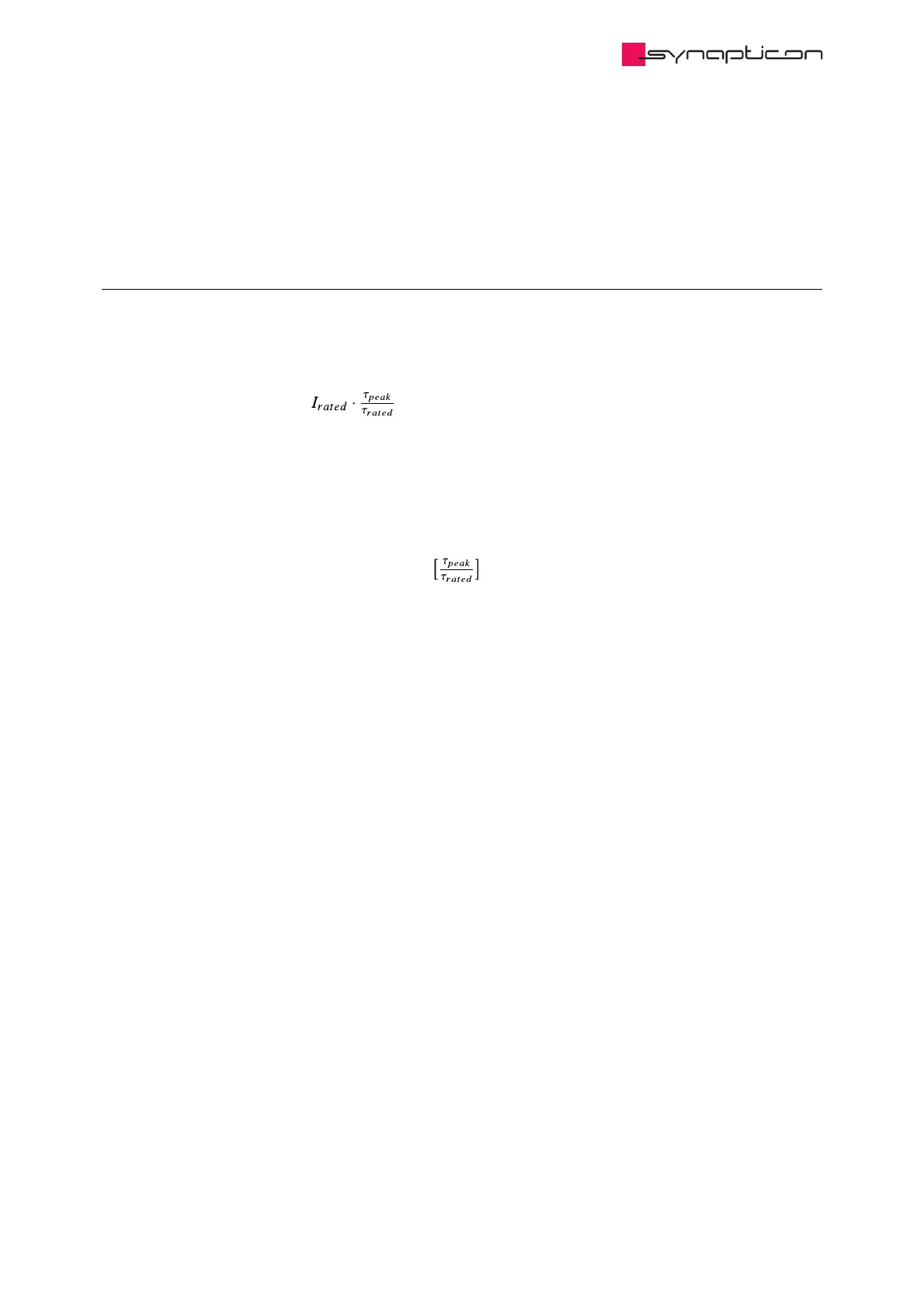4.1.1.1.3 What the Servo Drive Consumes
DC Power: P = U ・I
DC DC DC
4.1.1.2 Calculating the phase current
For selecting a drive, the maximum RMS phase current is the important parameter that should be considered.
According to the technical specification table for a given servo drive and a known maximum RMS phase
current, an appropriate drive can be chosen for the application. In case the peak current desired for the
application is not explicitly known, it can be estimated assuming linear torque characteristics.
Maximum peak phase current = ( + nonlinearity buffer)
4.1.1.2.1 Estimating the required nonlinearity buffer
For the peak torque, the maximum torque required in the application must be considered - which is not
necessarily the peak torque that the motor can provide or its datasheet claims. As real motor characteristics
are not linear, a buffer shall be added to the linearly calculated peak current. A buffer of 10% to 50% is
reasonable, depending on how much the overload is. If the maximum torque required by your
application does not exceed the rated torque of your motor (overload <= 1), a buffer of 10% in the equation
above is fine. If the peak torque used in your application is 2, 3 or 4 times the rated torque of the motor, the
motor can run into its saturation region, where bigger nonlinearity buffers can be required. For details, consult
with the motor manufacturer and check the motor curves.
